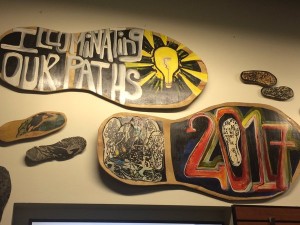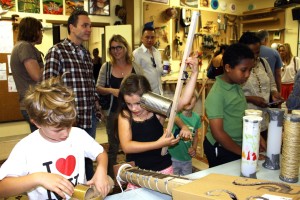As most who follow this blog know, I faced some pretty serious health issues towards the end of last year. That I came through it, when statistically it was a coin-flip, was down to luck and the superb intensive care I received. Coming out the other side, however, I was determined to make the most of whatever time I’m allowed. I’d been thinking a lot about this over the New Year period when a wise Irish friend, Colman Farrell, quoted Camus at me: ‘Live to the point of tears’, he urged me. And there it was, my New Year’s resolution – and new life’s plan – more eloquently stated than I could ever manage.
towards the end of last year. That I came through it, when statistically it was a coin-flip, was down to luck and the superb intensive care I received. Coming out the other side, however, I was determined to make the most of whatever time I’m allowed. I’d been thinking a lot about this over the New Year period when a wise Irish friend, Colman Farrell, quoted Camus at me: ‘Live to the point of tears’, he urged me. And there it was, my New Year’s resolution – and new life’s plan – more eloquently stated than I could ever manage.
Well, I’ve been doing pretty well on that front. Part of this year is dedicated to thanking family and friends who rallied round when I needed them most, and my first thank-you trip was combined with leading a study group of Australian educators to schools in Southern California. Lots of raised glasses, toasts, and not a few tears were shed.
But what we saw, in the schools visited, was an extension of that philosophy: ‘Teach to the point of tears’. I’ve never been to the High Tech High schools in San Diego County without being powerfully moved by the articulacy, confidence and optimism displayed by the student ambassadors, who lead visitors tours there. Of all the amazing students I’ve met at High Tech High, however, I’m not sure I’ve ever met one like the 6th grade student who showed us around the High Tech High Chula Vista campus. Her name – and I’m not making this up – is Life California. With a name like that, she clearly is destined to do great things, and I’m absolutely sure she will (one of her many stated career ambitions was to be President – if you met her you’d see that is eminently possible). Life told us about how the relationship between teachers and students is deep and special at her school – their is a mutual trust there which is astonishing to see. And there needs to be, because students at High Tech High are constantly encouraged to reflect on their growth, as learners, and as human beings too. They do this publicly, through the presentations of learning, as well as in peer groups in their student advisories.
When this abundantly confident little girl told us how the learning environment had allowed her to overcome her initial shyness, I looked around at our tour group – we were all discreetly wiping away tears. Much has been written about the project-based learning philosophy that drives the learning at HTH, but less is heard of the relationships and the culture of the place. The desire to have students and teachers work on often very emotive subjects – trans-gender issues, migration (Chula Vista is right on the Mexican border), adolescent anxieties, all were being discussed as we toured – means that students, and staff, are often teaching and learning to the point of tears. Such willingness to open up, breeds an emotional intelligence in HTH students that other schools can only dream about. Life (the person, not the thing) is by no means exceptional. The recently released film, ‘Most Likely To Succeed” (more of which in subsequent blogs) shows several students making huge growth in their emotional development – I guarantee you’ll cry too, when you see it.
To visitors from Australia and Britain – we’re often portrayed as ‘blokey’ or ‘buttoned-up’ – all this open emotion comes as a bit of a shock to the system. We’re at the point in the UK where fear of litigation means that violin teachers are wary of touching students when working on hand positioning, and we steer well clear of the ‘L’ word. But I’m not advocating pedagogical lachrymosity on some touchy-feely-let-it-go basis. Students might have home backgrounds where the development of emotional intelligence isn’t fostered, or they’ve not been encouraged to investigate difficult social issues. But the biggest reason for teaching to the point of tears is that learning that has deep, emotive roots is simply more likely to stick.
We asked Life California how she saw her future: I wished we’d recorded it. She gave the most eloquent analysis of the future of work, including the impact of automation, globalisation, and the need to create your own ‘job’ (remember, this is a 6th grade student). She saw this as a challenge which her peers would rise to, because her school was helping them develop presentation skills, adaptability, team-working and flexibility. She didn’t mention her grade-point average once.
And so we ended the trip at the incredible New Roads school in Santa Monica. This is an independent school with a strong ethic of equity – approximately 40% of students have their fees waived. Though there’s a wide social mix it’s impossible to tell which kids are from wealthy families and which are less privileged. As they’ve reached their 20th birthday, their philosophy has been refined:
“New Roads School seeks to promote personal, social, political and moral understanding, and to instil in young people a respect for the humanity and ecology of the earth and the sensitivity to appreciate life’s deep joys and mysteries….We understand that there are many kinds of intelligence. As such, our programs assist young people in developing and appreciating cognition, intuition, imagination, artistic creativity, physical expression and performance, sensitivity to others, self-understanding, and personal well-being. To neglect any of these areas is to limit students in the development of their full human potential.”
That’s about as far away from the bland school mission statement, as is possible to get. And in every classroom we visited this philosophy was self-evident. Students were not just expected to work hard academically, they were encouraged to find their true selves. The money hasn’t gone into plush accommodation (although Steven Spielberg, who sent his kids there, has donated a lovely theatre) – it’s gone into creating a rich, socially diverse learning community who are loving appreciating life’s deep joys and mysteries.
The tour finished with a student-devised dance performance, based upon the ‘I Am Malala’ book. The audience were segregated, in an attempt to recreate the gender inequality that Malala experienced. The dance was powerfully and professionally executed. But the clincher came at the end, when each performer went into the audience and brought on stage a teacher, as a gesture of thanks and appreciation. Their evident love of learning was tempered by the knowledge that many children around the world are not able to access even basic education, and their good fortune was celebrated with a spontaneous hip-hop stage invasion. There was, literally, not a dry eye in the house. One student , genuinely perplexed, said “I’ve never cried at a performance before, and I don’t know why I’m crying now, but that was amazing”. A teacher, deeply moved, said: “We are so lucky to be able to come to a school like this, when others are denied education”.
 It’s easy to be cynical about such expressions of almost stereotypical Californian sentiment, but ask yourself, what is school for? Is it about processing students to achieve a certification which has increasingly less validity, or is it about them finding out who they are, who they want to be, and finding their ‘element’? Because if it’s the latter then we, as educators, shouldn’t be afraid to share our own passions, foibles, insecurities, uncertainties and, yes, our emotions. In 20 years time, those kids will never remember a single worksheet they filled in. But they’ll always remember Malala, and that dance performance, and the teacher who taught to the point of tears.
It’s easy to be cynical about such expressions of almost stereotypical Californian sentiment, but ask yourself, what is school for? Is it about processing students to achieve a certification which has increasingly less validity, or is it about them finding out who they are, who they want to be, and finding their ‘element’? Because if it’s the latter then we, as educators, shouldn’t be afraid to share our own passions, foibles, insecurities, uncertainties and, yes, our emotions. In 20 years time, those kids will never remember a single worksheet they filled in. But they’ll always remember Malala, and that dance performance, and the teacher who taught to the point of tears.




